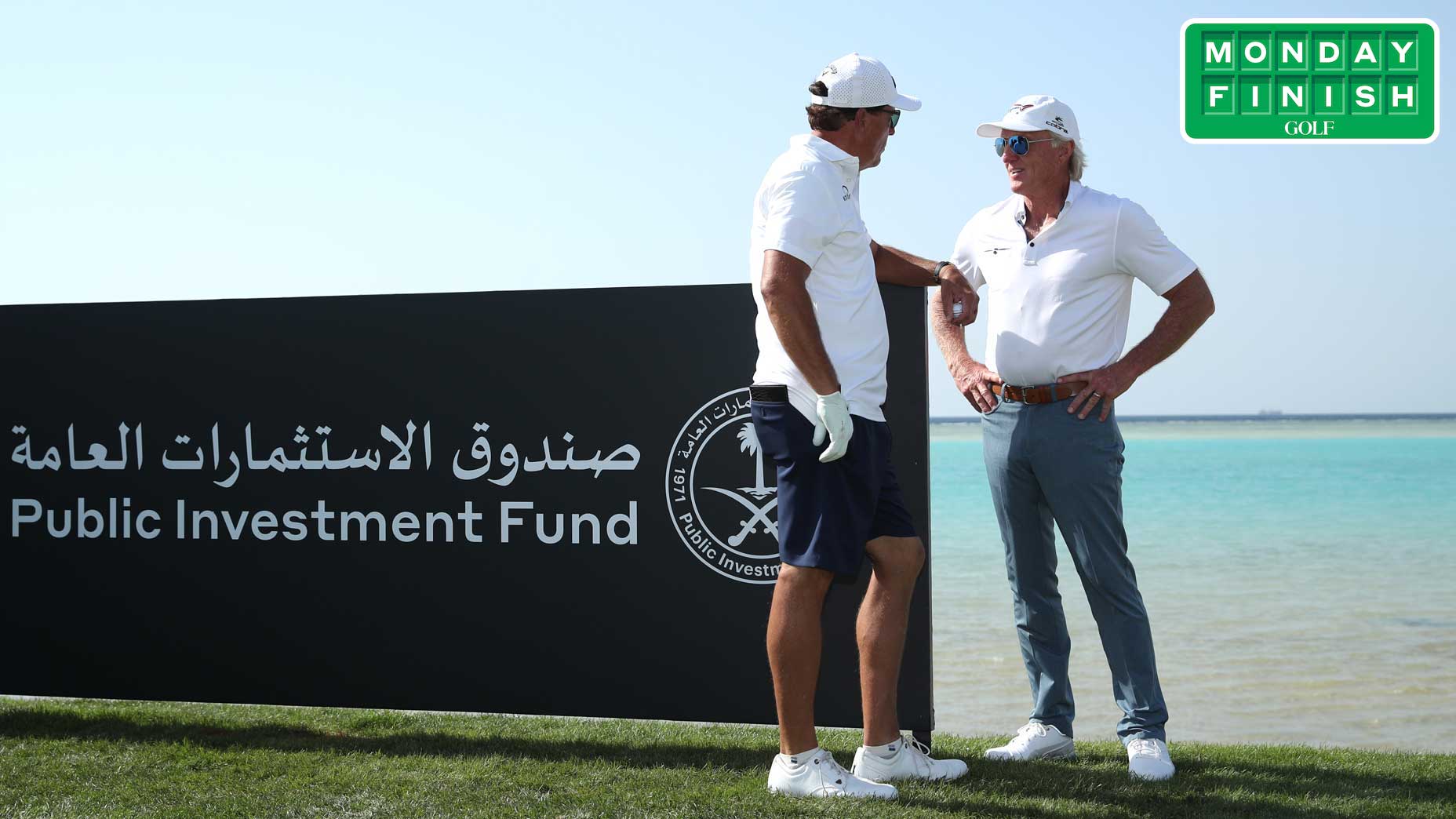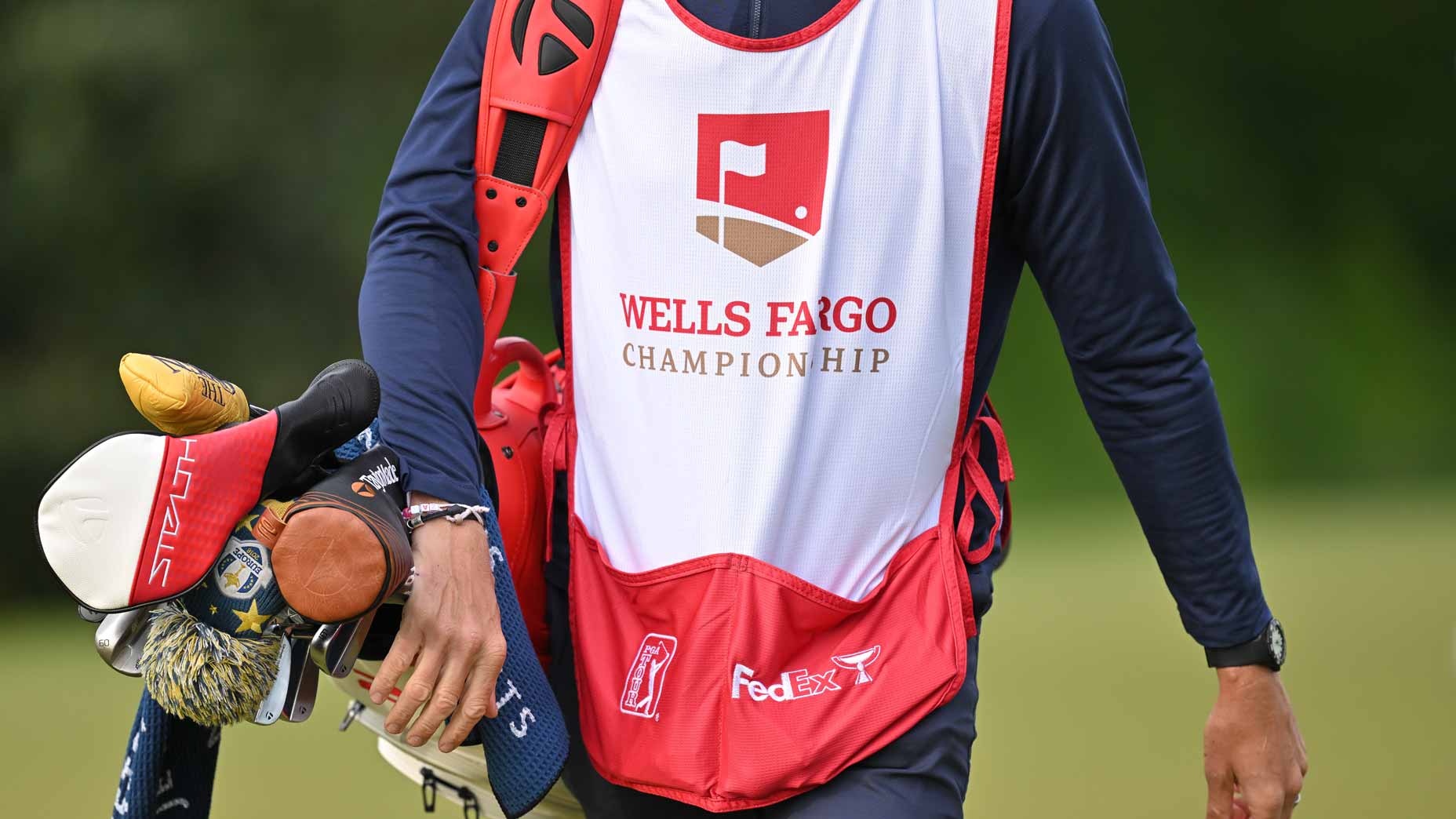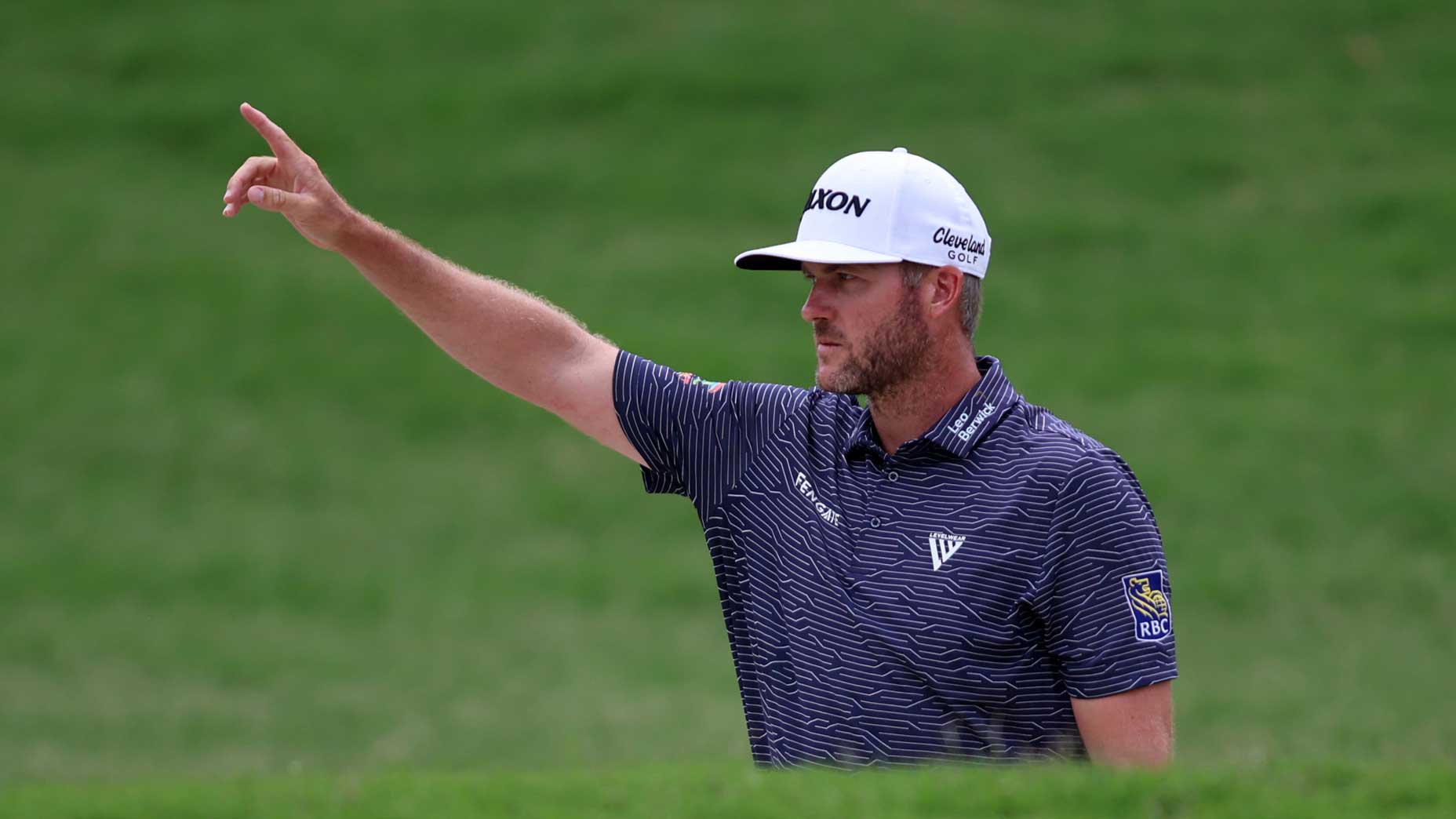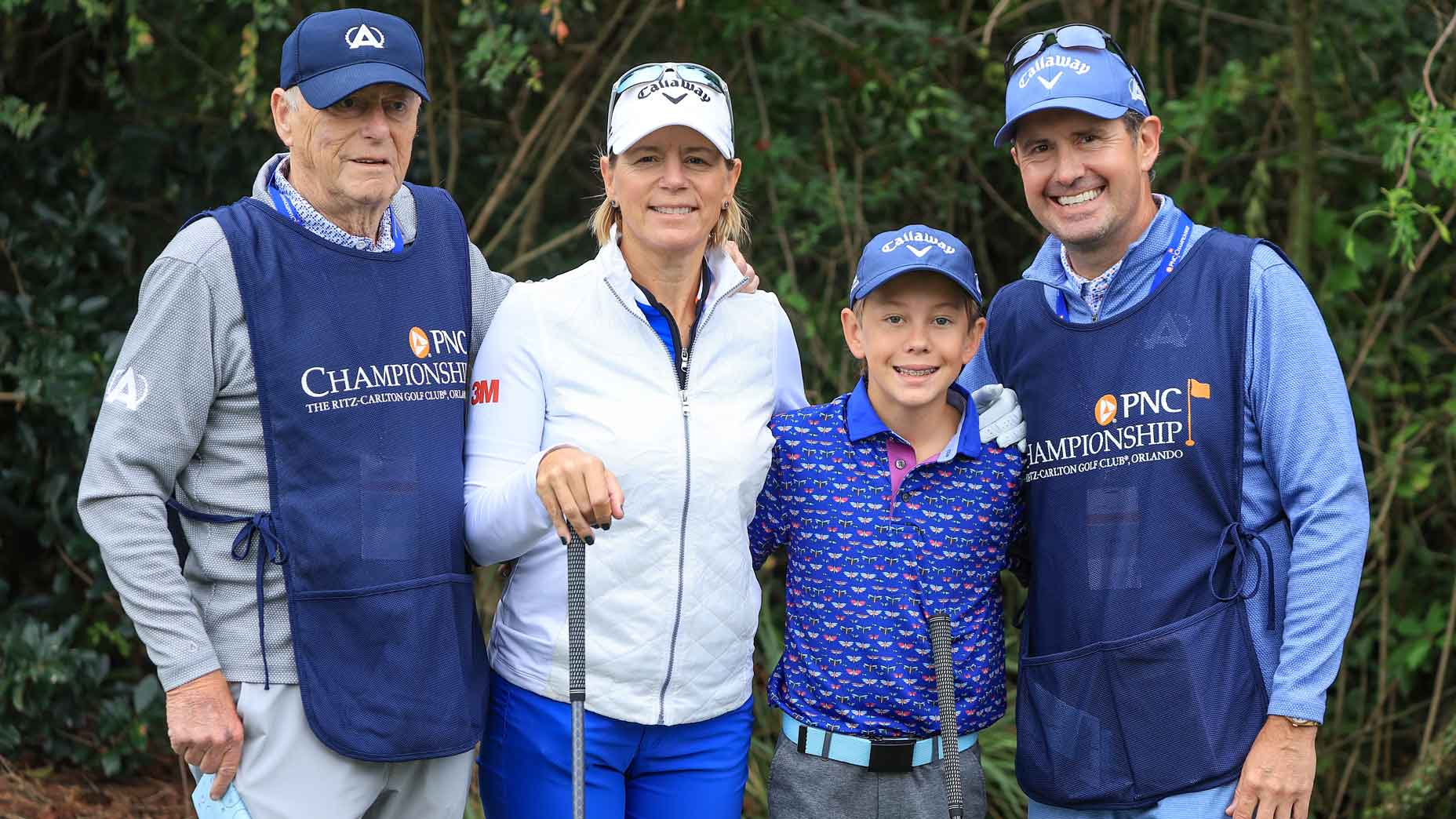 Annika Sorenstam on how motherhood has changed her, and sharing the spotlight with son Will
Annika Sorenstam on how motherhood has changed her, and sharing the spotlight with son Will
How a stray golf ball to the head sent Tour pro Trey Mullinax’s world into a tailspin
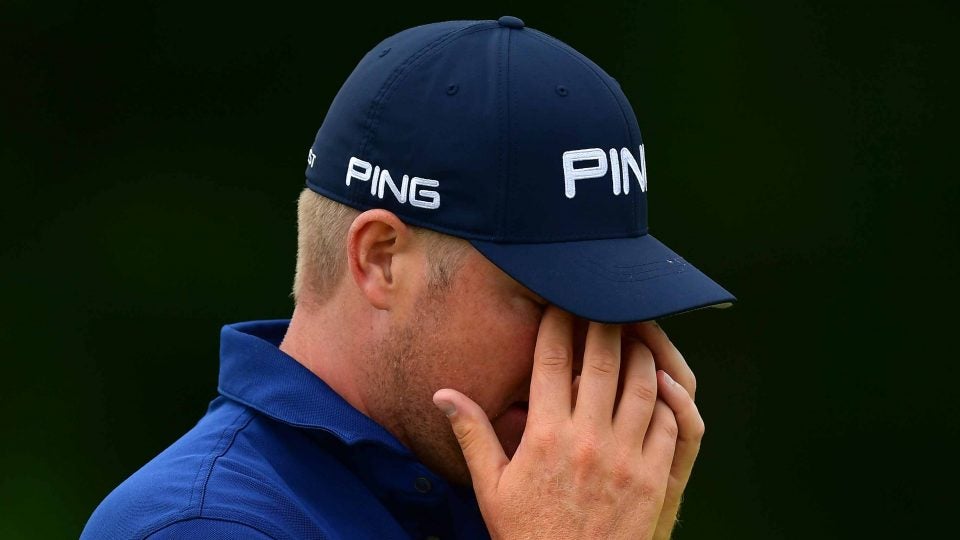
Trey Mullinax’s memories from last May in Fort Worth are a mix of hazy and irretrievable, but he does recall his final hole in the Wednesday pro-am. After he and his partners had hit their tee shots on the 9th hole at Colonial Country Club, Mullinax ducked his 6-foot-4 frame into a porta-potty. Upon exiting, he signed autographs for a few kids, proceeded to his ball in the fairway and hit up to the green. He had eyes on three of his amateur partners — but not the fourth.
“He’s over there somewhere,” one of the other amateurs said. “I think he’s picking up by the green.”
Mullinax’s group was still in the fairway, by a bunker on the 402-yard par-4, but Southern gentleman that he is — Mullinax was born, raised and schooled in Alabama and has the drawl to prove it — he had already commenced the end-of-round niceties, shaking his partners’ hands and thanking them for supporting the Charles Schwab Challenge.
The next thing Mullinax remembers is waking up on the ground, the beating-hot Texas sun bearing down on him.
*****
Bad luck is an inherent part of the game. The mashed drive that rolls into a divot. The stiffed approach that bounds off a flagstick. The flushed recovery that catches the only branch in its path. But a stray ball to the back of the head? No golfer deserves that grim stroke of fate.
You’ve likely already put the pieces together, but Mullinax’s absent partner wasn’t up by the green. He was, in fact, still back down the fairway, playing his second shot, which was destined to become a 1.68-inch dimpled bullet bound for Mullinax’s skull. When the pro came to, his then-caddie, David Flynn, was standing over him encouraging his boss to stay still.
Mullinax’s head was pounding and he felt “out of it,” but he wasn’t exactly sure how or what he should be feeling. As the 27-year-old says now, “I’d never been hit in the head with a golf ball before.”

Tournament medics rushed to Mullinax’s side and escorted him to a tent for evaluation. Mullinax insisted he felt fine, other than the headache and some dizziness. He resisted the need for a hospital visit until someone reminded him what had happened to Liam Neeson’s wife, Natasha Richardson, after she suffered a blow to the head while skiing in Canada in 2009. (Richardson underestimated the seriousness of the injury and at first refused medical attention. Two days later, she died in a New York City hospital from an epidural hematoma.)
In the emergency room at Fort Worth Methodist, doctors confirmed that Mullinax did not have internal bleeding, then diagnosed him with a mild concussion and prescribed him pain medication. “Their job was done and I went on my merry way,” he says.
The next few days, though, were anything but merry. Mullinax played well for two rounds, opening 67-69, but the meds were taking a toll. He felt nauseated, disorientated and the near-90-degree temperatures weren’t helping. After the second round, he had to ask Flynn if they’d made the cut. They had, by seven shots. Mullinax’s spotty recall was troubling. “I couldn’t tell you who I played with, what shot I hit, and usually I have a really good memory,” he says. “I couldn’t tell you where I finished.”
Fortieth place, good for $26,280. It was the last check Mullinax would make all year.
*****
When Mullinax returned home after the Colonial, you might have expected his first stop, after a hug for his wife, Abi, then-infant daughter, Sawyer, and golden retriever, Hogan (the couple have a second child, a son, due in May), to be at a physician’s office, maybe even a neurologist’s. It wasn’t. Mullinax still felt a little shaky but it wasn’t anything he couldn’t handle. Plus, he had work to do.
He had been playing solidly, making 14 cuts in his last 16 starts dating to November, but with no top 10s he wasn’t exactly flush with FedEx Cup points. Mullinax was 116th on the points list (the top 125 at season’s end secure their cards for the following season). He needed some strong finishes in the summer to protect his status, to satisfy his sponsors, to provide for his family. He wasn’t about to let a few headaches keep him off the job.
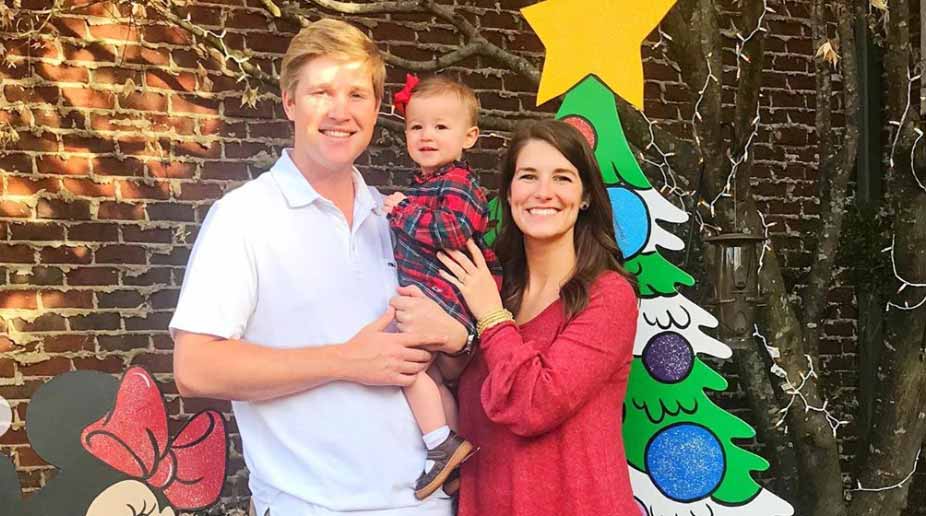
Mullinax’s first start after Colonial was the Canadian Open, at Hamilton G&CC just south of Toronto. Flynn had the week off, so Mullinax’s father, Chip, was on the bag. It quickly became apparent to Chip that his son was not himself. Trey’s distance control was way off — on par-4s his approaches were coming up 10 or 15 yards short — and he was uncharacteristically quick tempered. “Are you okay?” Chip would ask. “I’m fine,” Trey would snap back. Trey wrote off the exchanges as harmless father-son bickering. He shot 69-71 and missed the cut.
Two weeks later, at the Travelers Championship, outside Hartford, Conn., Mullinax found himself chunking wedges from the middle of the fairway. “I’ve never been a guy to make excuses,” he says. “I thought I was in a slump.” Again, he packed his bags on Friday.
Mullinax’s poor form drove him to practice harder, with lengthy grind sessions on the range. At home, his short fuse was becoming evident to Abi. Mullinax brushed it off. He felt everyone around him was being oversensitive.
After Hartford, Mullinax played three more consecutive weeks, in Detroit, Minneapolis and Silvis, Ill., resulting in three more MCs. The headaches persisted and he was starting to lose sight of the ball at address. By now, he had slipped to 143rd on the points list, in serious jeopardy of losing his card.
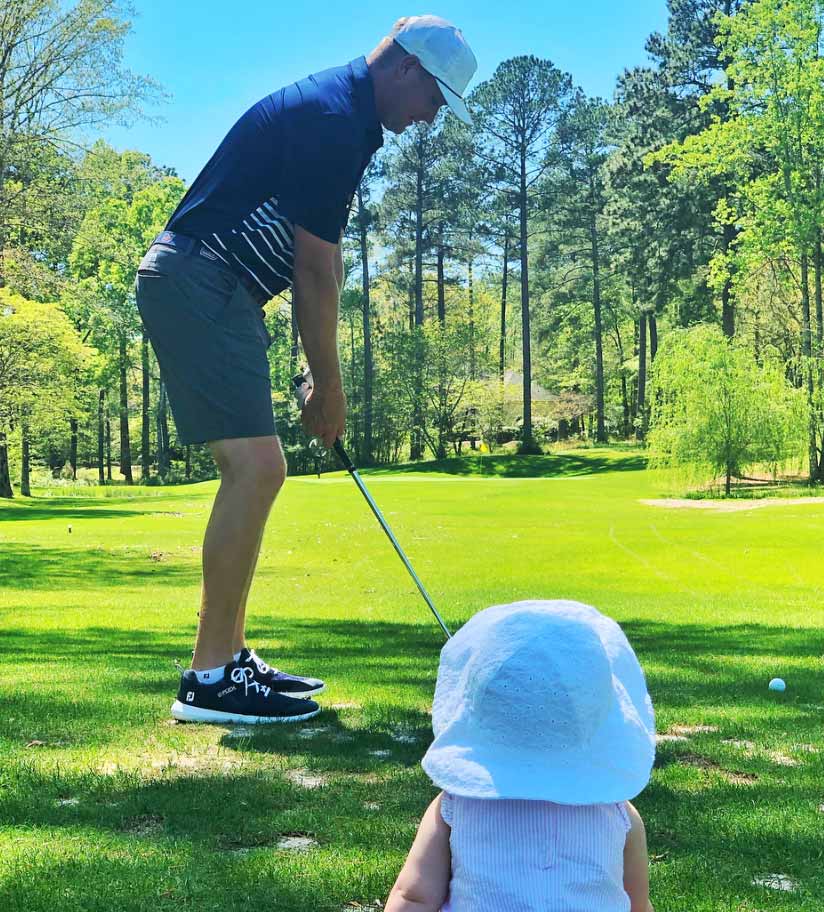
ADVERTISEMENT
He played on. The next stop was the go-low-or-go-home Barbasol Championship, in Kentucky. In the steamy second round, Mullinax was decidedly not himself. Lethargic, dizzy, in a thick fog. Early in the back nine, he told his father, who was walking with his group, “I don’t think I’m going to make it.” But Mullinax’s partners were playing well and he didn’t want to disrupt their rhythm, so he stuck it out, with cold towels draped around his neck. He made it through 18 holes but could barely muster the energy to sign for his 77. In the locker room, he fell to his knees and vomited several times. Later that day, back at his hotel, he passed out getting out of the car and soon after was admitted to a hospital. Doctors believed he had heat stroke, but that didn’t add up to Mullinax who had grown up in Alabama playing baseball, football and golf in sweltering conditions with no ill effects. Why would the heat be getting to him now?
Mullinax’s loved ones had seen enough. It was time for him to get checked out. He visited four doctors, including Jimmy Robinson, the head physician for the University of Alabama football team, and Joe Ackerson, a renowned Alabama neurologist. All returned the same diagnosis: Mullinax was severely concussed. “They did one test and told me to go home immediately,” he says. “They said we can’t even do anything with you for a month because I was so messed up.”
Mullinax had what’s called convergence insufficiency, a condition in which your eyes are unable to focus on nearby objects, which, according to the Mayo Clinic, can lead to blurriness, headaches and an inability to concentrate. “My brain and my eyes were telling me two different things,” Mullinax says. Now, everything was adding up. The stray ball at Colonial had struck Mullinax in the back-left portion of his head, which is where the visual cortex is located. “When I got hit,” Mullinax says, “my brain elongated and hit the front part of my skull and jumbled everything up.”
Mullinax learned from his doctors that his condition worsened with time because of his constant physical activity, especially in warm conditions. “At that time, that’s all I was doing — practicing, playing and trying to get out of the slump that I thought I was in. Each week I played added like two weeks of recovery.”
At last, Mullinax acquiesced and put his clubs away. Over the next six weeks he didn’t do much of anything. No golf. No driving. He sat at home in sunglasses watching Netflix and delighting in his daughter’s company. His doctors said that if he had just rested for two weeks after the accident, he would have more than likely been fine.
“Knowing that then would have been awesome,” Mullinax says.
*****
The PGA Tour does not have a concussion protocol. It’s not a contact sport, like those played in the NFL, NBA, NHL or MLB, so admittedly there is limited need for such precautions. But freak injuries from stray shots do happen. At the Greenbrier last fall, Marc Leishman was struck in his already aggravated back by a shot from an amateur playing partner. Mullinax says he knows of another player who was doinked at the pro-am in the Reno event. Just last week, at a PGA Champions pro-am, a young girl playing in Ernie Els’ group plunked the four-time major winner with a wedge shot. Fans gasped. The stunned girl raised her hand to her mouth. It was harmless. Els laughed it off.
It’s not always the amateurs who deliver the blows. In a Korn Ferry event Mullinax played in the Bahamas in January, Blayne Barber was on the practice green when a shot came whizzing out of a bunker and hit him in the face. Mullinax said the ball cut Barber and blackened his eye. “We’re not perfect,” Mullinax says. “We hit bad shots, too.”
No one’s suggesting these types of injuries are an epidemic or that pro golfers should be donning helmets and mouthguards, nor does Mullinax hold any ill will against the Tour for not having a concussion protocol. But he does think it would be a sensible idea to institute one. “What’s the harm?” he says. All the other major sports leagues, including professional tennis, conduct baseline testing before each season to measure their players’ brain functions in a healthy state. (The tests take less than 30 minutes to complete online.) Should an athlete suffer a head injury, that neurocognitive exam becomes a barometer for whether any damage has been done.
Accidents can also happen off the playing field, which can leave sports leagues and organizations exposed. In 2015, at the tennis U.S. Open, a Canadian player suffered a concussion when she slipped on a wet floor in the locker room; she sued the United States Tennis Association and won.
When asked whether the PGA Tour would consider establishing a concussion protocol, a Tour spokesperson, despite repeated inquiries, declined to directly answer the question, saying it’s the duty of tournament medics to diagnose players’ injuries. “Every tournament has physicians both on-site and on-call to immediately treat any player-related medical situation,” the spokesperson said. “Their responsibility is to provide emergency care and to refer patients based on their symptoms as appropriate.”
Mullinax’s recovery — he didn’t start hitting balls again until September — was drawn out in part because he didn’t have baseline numbers. Without them, doctors were shooting in the dark and unable to clear him until they could be certain he had fully mended.
Mullinax ended the 2018-19 season 157th on the points list. He qualified for a minor medical exemption but under that algorithm (which awards players starts, in part, based on the average number of tournaments they had played in each of the previous three seasons), he was allotted just one start, arguably a rather stingy allowance given the circumstances of Mullinax’s injury. Mullinax says he appealed and was awarded one more start, which meant he had two tournaments to earn the necessary points to keep his card. (A Tour spokesperson would not comment on Mullinax’s exemptions because the Tour does not discuss players’ medical cases.)
Mullinax, a man of faith, isn’t one to mope or stew, but he does admit that at first his bad luck was not easy to accept. “It wasn’t as if I was banging balls and jammed my wrist or jumped off a boat and got a concussion,” he says. “I didn’t do anything to cause it to myself, so that’s the thing I struggled with the most. Why I am having to suffer the consequences?”
Were two exemptions from the Tour equitable in Mullinax’s eyes? “They did what they thought was best, and at the end of the day I have to live with that,” he says, with no trace of bitterness in his voice. “Was it fair, was it not fair? I don’t know. All I know is good golf will take care of itself in the long run and I don’t want to make any excuses for myself or throw anyone under the bus. If that’s what they deemed was necessary to give me, then I have to go with that. Would I have loved more starts? Absolutely. But I do believe I’ll come back better and stronger.”
The decision not to see a doctor sooner was Mullinax’s alone but it still gnaws at him given he was unaware of the gravity of his condition. “It’s one of those things where you don’t know what you don’t know,” he says. Mullinax says that if the Tour had had a concussion protocol, then he would have taken the test at Colonial and not passed. “Then I’d have all those events back and then I could use those events instead of being in the boat where I am now,” he says.
With his two starts, Mullinax needed to earn at least 115 FedEx points to maintain his full playing privileges for the 2019-20 season (for reference, a 4th-place finish in a regular Tour event is worth 135 points, 5th place is 110, 6th place is 100 and so on). His first tournament back was the Farmers Insurance Open at Torrey Pines in January. Everything felt good. His game, his body, his mind. He showed positive signs, bouncing back from an opening 77 to shoot a second-round 66 to make the cut. But the weekend was less fruitful; he finished 78th to pick up just 2 points. A week later, Mullinax made his second start, at the Waste Management Phoenix Open, but missed the cut by six. His meager points haul left him short of even conditional status.
It was official: Mullinax was off the Tour.
*****
In the nine-plus months since the accident, Mullinax has not corresponded with the amateur who hit him. He was told his pro-am partner did try to reach out to him at one point but he and Mullinax never managed to connect. Those Tour pros who are aware of his situation, Mullinax says, have been deeply supportive, in particular his old Crimson Tide teammate, Justin Thomas. (“People don’t know how good a friend he is,” Mullinax says.) Mullinax is in a lonely place, on the outside of pro golf’s Eden looking in, but he’s determined to make the most of his conditional status on the Korn Ferry Tour.
In February, Mullinax played in his first pro-am since the accident, at the Korn Ferry event in Bogota, Columbia. “I stayed well behind everyone who was hitting,” he says with a laugh. Last week, when he made another Korn Ferry start, in Mexico, another malady befell him: a crippling case of gout in his right big toe. He hobbled through two rounds. “The devil is trying to get the best of me, but I ain’t gonna let him,” Mullinax says.
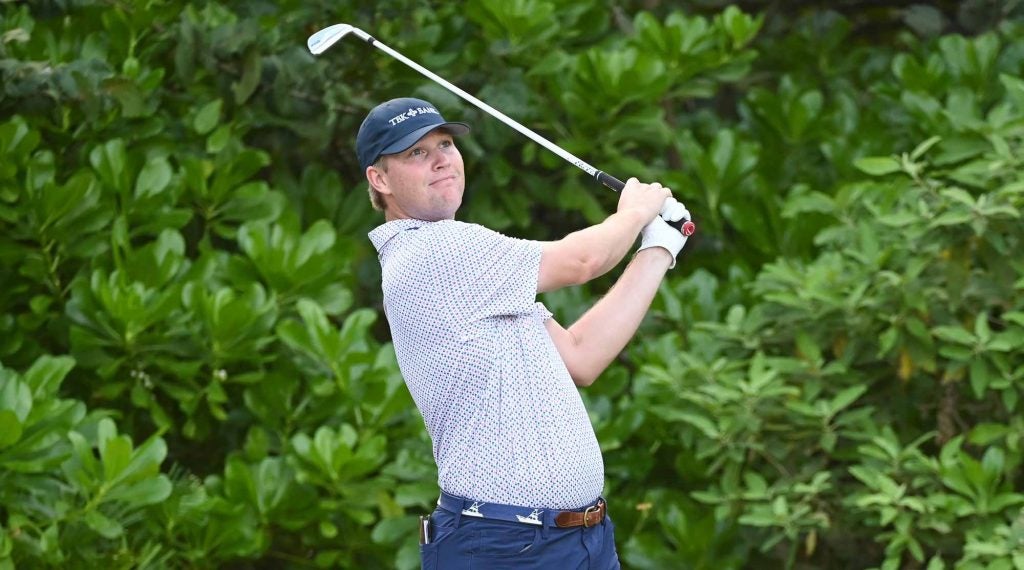
There are two ways Mullinax could find his way back into a PGA Tour field: Monday qualify or receive a sponsor’s invitation, for which Mullinax has been lobbying tournament directors. “I would love to play as many PGA Tour events as I can, but if I play one, one is better than none,” he says.
Sponsor invites aren’t easy to come by. Take, for example, the Colonial, which, according to tournament director Michael Tothe annually fields between 175-200 requests from players seeking one of the event’s 12 golden tickets, only two of which go to Korn Ferry players. The tournament prioritizes pros who live in the Dallas-Fort Worth area, or who have been loyal to the event, but given Mullinax’s ordeal, Tothe said the other day, “We’ll certainly give him every consideration. He’s on the top of the list.”
In the meantime, Mullinax is digging in on the Korn Ferry Tour with an eye on regaining his card through the tour’s finals at the end of August. Scrambling for starts on the developmental circuit is a long way from the glory and comforts of the PGA Tour, but Mullinax has found a silver lining. Sitting on the sidelines allowed him to spend more time with his family and bond with his daughter. He says it’s also made him realize he needs to smile more on the course. Enjoy the ride, bumps and all.
Perhaps most significant, though, Mullinax’s misfortune on that regrettable day in Fort Worth has affirmed to the young pro what the game means to him. “Until I had golf taken away from me, I didn’t know how much I loved it,” he says. “I love it to my core.”
To receive GOLF’s all-new newsletters, subscribe for free here.
ADVERTISEMENT



